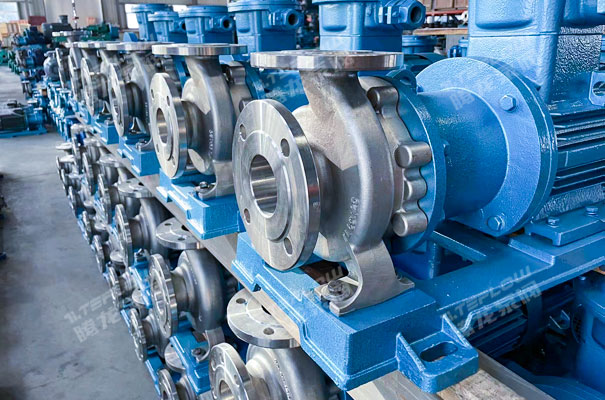As a crucial component in the realm of liquid conveyance, chemical magnetic pumps play a pivotal role in various industrial processes. The following is a comprehensive analysis of the common parameters and their significance in chemical magnetic pumps, aiding in a better understanding and utilization of this critical equipment.
1. Flow Rate (Q):Flow rate refers to the volume of liquid transported by the magnetic pump within a unit of time, commonly measured in cubic meters per hour (m³/h). Understanding the flow rate helps ensure that the pump meets the system's conveyance requirements, preventing issues caused by over or undercapacity.
2. Head (H):Head signifies the height to which the liquid is lifted within the pump, typically measured in meters (m). It directly relates to the pump's conveying height, and comprehending head assists in the proper layout of the conveyance system, ensuring the liquid reaches the intended locations.

3. Power (P):The power of the pump indicates the energy consumed during its operation, usually measured in kilowatts (kW). Grasping power information aids in evaluating the pump's energy efficiency, and selecting an appropriate power level contributes to energy savings.
4. Electrical Current (I):Electrical current is the current required by the pump during operation, commonly measured in amperes (A). Understanding electrical current helps in configuring the power supply system properly, ensuring the normal operation of electrical equipment.
5. Net Positive Suction Head Required (NPSHr):NPSHr denotes the minimum net positive suction head required by the pump on the suction side to ensure proper liquid intake. Having a clear understanding of NPSHr helps avoid cavitation, ensuring the pump's normal operation.
6. Temperature (T):The temperature to which the pump is exposed while transporting the liquid, usually expressed in degrees Celsius (°C). Knowing the temperature limits helps in selecting suitable materials, ensuring the pump's stability under different operating conditions.
7. Pump Material:The material of the magnetic pump directly affects its corrosion resistance and wear resistance, typically including materials for the pump body, impeller, and other components. Choosing appropriate materials can extend the pump's service life and reduce maintenance costs.
8. Pump Type:Magnetic pumps can be categorized into different types based on their structure and operating principles, such as centrifugal and submersible types. Understanding the pump type helps in selecting the right model according to specific needs, enhancing the pump's operational efficiency.
Taking into account the parameters mentioned above provides a more comprehensive understanding of the performance characteristics of chemical magnetic pumps, supporting accurate selection, proper operation, and effective maintenance.





 +86 18130251359
+86 18130251359 teflowpumps@tlpumps.com
teflowpumps@tlpumps.com








 +86+0563-5093318
+86+0563-5093318
